*This post contains affiliate links. As an Amazon Associate, I earn from qualifying purchases. This means when you make a purchase, I get a commission at no cost to you! Read more about my affiliates on my Affiliate Links Disclaimer.
Climate change is here people! Throughout my graduate school experience (2006), climate change was the hot topic that ecologists needed to study. We were reading papers about how birds were migrating earlier and habitat range was changing. But these effects are subtle to most of the public.
Now things have changed and the signs cannot be ignored. We are in a climate emergency.
In 2019, the Oxford Dictionary named “climate emergency” the word of the year. A 16 year old girl inspired millions of people to walkout of schools and businesses to protest the inaction and bring attention to this emergency. That girl, Greta Thumberg, was named Time’s person of the year.
Like Greta, I’ve had enough . In some countries (like the US), we are getting ignored and you can feel helpless. So with this blog post, I hope to give you actionable steps that you can do to reduce your carbon footprint in the meantime.
This blog post is not meant to shame you or make you feel bad. I want millions of people trying to reduce their impact imperfectly than a hundred or so doing it perfectly.
What is Meant by Climate Emergency?
According to the Oxford Dictionary, climate emergency is “a situation in which urgent action is required to reduce or halt climate change and avoid potentially irreversible environmental damage resulting from it.”
Signs That We are In a Climate Emergency
Now, we are seeing BIG things and the climate emergency is here. This paper found 467 pathways in which climate change has affected”human health, water, food, economy, infrastructure and security” by “warming, heatwaves, precipitation, drought, floods, fires, storms, sea-level rise and changes in natural land cover and ocean chemistry.”
- More frequent and stronger hurricanes from warmer ocean temperatures (Hurricane Maria)
- Fires from extreme drought (like the Australian ones and California ones)
- Glaciers melting at rates faster than scientists predicted
- Massive coral bleaching (check out images here along with other signs)
I am not that old and even I have seen massive changes in the climate in the last two decades.
Look, they don't know which way to run from cars, but they sure know which way to run from fire #NSWfires #bushfirecrisis 🤞 pic.twitter.com/EguanpLJq0
— Mitchell Lyons (@mitchest) December 30, 2019
Things YOU Can Do in a Climate Emergency
This is causing me a lot of anxiety. I care so deeply about the humans and animals that will suffer from this climate change emergency that we could have prevented, but now have to mitigate for the best case scenario. We have to keep trying though. And stay optimistic. We have no other choice.
Here I go through the most important things that YOU can do as an individual that have an impact. I tried to order them in terms of importance based on scientific research, but as you’ll see, some of them cannot be easily measured, but do have a big impact. Farther down the list, it was harder to put them in order.
Actions That Have a Big Impact in a Climate Emergency:
1. VOTE IN EVERY SINGLE ELECTION AND FOR EVERY OFFICE FROM YOUR SCHOOL BOARD TO PRESIDENT.
This one is so important that I even violated my own heading formatting consistency to emphasize it.
Vote for candidates that support climate change action.
Make sure you are registered! In lots of states (like here in NC) they are removing people from rosters, so even if you’ve voted before, check here.
At the very least before you vote, google their names, go to their websites and read about what they plan on doing about climate change.
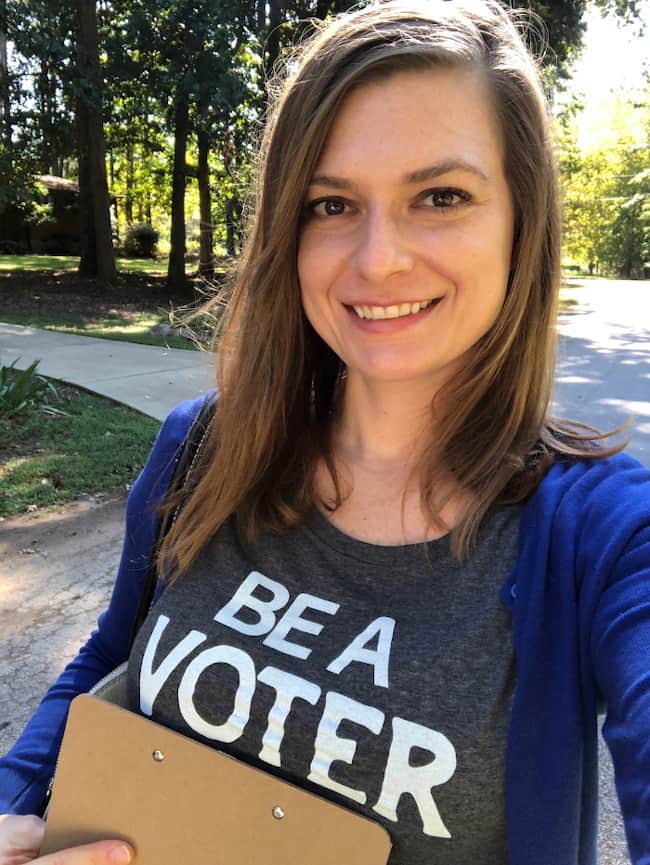
Ideally, months and weeks before, go to campaign events and ask them in person. This is really easy to do for local candidates. You can also call their offices and ask their staffers for their positions.
Voting doesn’t seem like it has an impact because it is a delayed and group effect, BUT it is the most important. Although there are things we can do on an individual level, we really need governments to intervene to get the situation under control to make massive changes. Our individual actions greatly pale in comparison to what governments can do to get corporations under control.
The Importance of Local Elections
I was never one to understand the importance of state’s rights, but I really saw the impact after the United States withdrew from the Paris Accord. Many leaders of cities and states around the country recognize that we are indeed in a climate emergency and decided on their own to uphold the Paris Accord’s standards.
If you really want to step up your game, volunteer for a candidate’s campaign. You can do things like write letters, make phone calls, or canvass. I’ve gone canvassing now dozens of times over the last few years because it is so important.
In between elections, you can volunteer for organizations that do things like voter outreach. I volunteer with You Can Vote here in North Carolina, a non-partisan nonprofit dedicated to making sure citizens are registered and knowledgeable about local elections and laws (which change a lot here in NC).
2. Call and Write Your Representatives
If voting is a long way off, you can still have an impact by calling your representatives and telling them that they need to support climate change action. The politicians need to know that we feel as if we are in a climate emergency; it can no longer wait. I myself need to get into the routine of doing this again. I used to do this every day and it takes only 30 seconds. You can say:
“Hi, my name is (your name) and I live in (city, state) in zip code (I usually say zip code so they are sure it is one of their constituents). I am a constituent of yours and I want to encourage you to support legislation that takes action on climate change.”
That’s it! All of these phone calls are reordered as data. in theory, politicians are supposed to respond to the things their constituents care about the most in spite of their positions. In the United States, a lot of it has fallen on deaf ears (which is why #1 is so important). However, this is still important to do.
You can find your US House rep here and your Senators here.
Want to know more on voting and how you can help even more? Listen to episode #21 of the Fancy Scientist podcast.
Powered by RedCircle
3. Change the Culture
To really make a big change, we need lots and lots of people talking about climate change and doing these things to shift cultural norms. This will also bring it to the forefront so governments soon cannot ignore us. Even using the word climate emergency is a big step.
When you are the only one talking about it, you seem like a weirdo, but eventually as more and more people join in, if you aren’t talking about it, you are the weirdo. Greta did that this year.
One year and one month apart pic.twitter.com/f2URDOVFm2
— Natalie Wolchover (@nattyover) September 20, 2019
Don’t just do your climate change actions in private. Share them with your friends and family. Here are some ways you can get started:
- Have real life discussions with your family and friends. For example, if you are planning a vacation, include a discussion about your carbon footprint. Instead of flying somewhere, maybe you can take a weekend trip to somewhere more local (I have yet to explore a lot of NC).
- When others are doing something good for the climate, tell them they are doing a great job! Don’t shame them for not doing enough. Encourage them with positivity.
- Share your actions on social media – are you taking a train instead of a plane? Post it with a caption! Did you subscribe for a composting service or switch to a vegan diet? Post your new favorite recipes.
- Share news articles and posts about companies that are doing good things for climate change or politicians that are taking action.
- When corporations aren’t doing a good job, ask them to do better publically on social media (especially Twitter). Brands really care about your image.
4. Have Fewer Kids – No Kids is Best
A lot of people are uncomfortable talking about not having kids, but not me! I am a very proud non-parent and believe you can live a rich and happy life without kids.
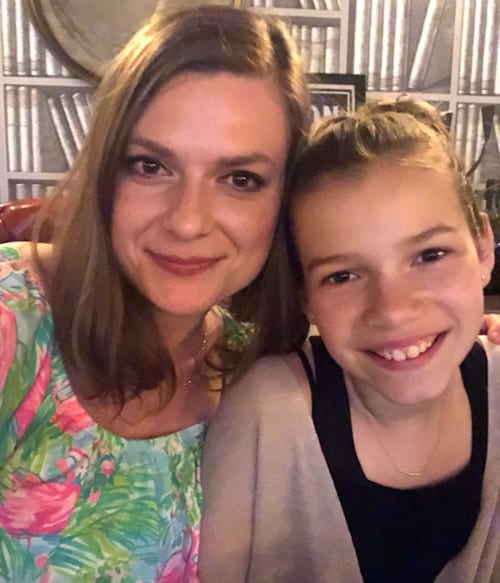
People are so uncomfortable talking about it that a lot of websites about climate change don’t even mention it (for example in both the CNN and WWF climate quizzes I use in this post).
Although I never wanted to have kids (climate reasons aside), I completely understand that people do want kids. Some of my friends who are conservation biologists even have kids. And of course many kids are not an intentional choice and even forced upon women (i.e. they were raped). I respect that many women do not want to get abortions in these scenarios.
If you are planning on having children though, if you reduce your household by one child, you decrease your carbon footprint by a 58.6 metric tons – off the charts compared to other efforts. Additionally, in developed countries, your child’s carbon footprint will be larger than yours.
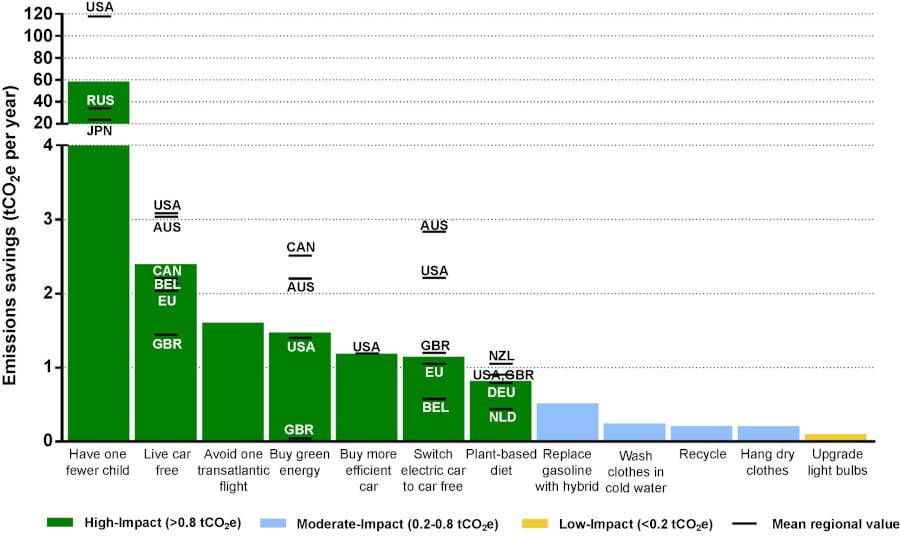
We don’t need to convince everyone (or even anyone) not to have kids if that’s really what they want, rather, I think we should shift the culture to fully accepting people who don’t want to have children.
My family is weird in that they never expected me to have children and embraced my decision not to. But this is definitely not the norm. Many parents encourage their children to have kids and society expects it. There are some cultures where not having kids is not acceptable.
I personally love not having kids (and will blog about this fully). I believe by not having kids I can have a more positive impact on this world and kids that already exist (like my niece and all of the teachers’ students that I work with). Not having kids does not mean you hate kids or that there is something wrong with you. Let’s start embracing non-child families as much as we do traditional ones.
Educate Girls
Another way you can help reduce and slow down population growth is through educating girls. Girls that go to school have more opportunities and will start having children later on in life. Having children later in life is correlated with having fewer children overall.
In many countries, if girls don’t have an education, they don’t have opportunities are and married off at young ages. Education empowers girls and gives them more choice and control in their lives. You can donate to organizations dedicated to providing girls with education worldwide.
5. Ditch Your Car
This is likely harder for you to do especially if you live in the US (our cities usually have poor public transportation) and impossible if you live in a rural area. But if you live in a bigger city, you might want to consider it.
At the very least you can:
- walk
- bike
- use public transportation
- skip a trip (I’ve personally been working from home more which helps the climate while saving me time and gas)
6. Reduce Your Flights
This one is really hard for me because I love to travel, but I also care about the environment and carefully plan the trips I take.
I rarely travel for pleasure (except to visit family), but I have in the past a lot for work. Now before I decide to go to a scientific conference, I ask myself if I really need to go.
Here’s some things you can do:
Combine vacations with work trips – this is something I pretty much always do. If there is a conference that I want to go to and it is in a cool location also, instead of taking a separate vacation, I plan some extra time for travel before or after the conference. I’ve done this for almost every vacation I’ve had now!
In 2019, I went to Malaysia, a place I’ve always wanted to go to, but a trip like that has a huge carbon footprint. I went there for my favorite scientific conference and stayed for a week after to travel throughout Borneo.
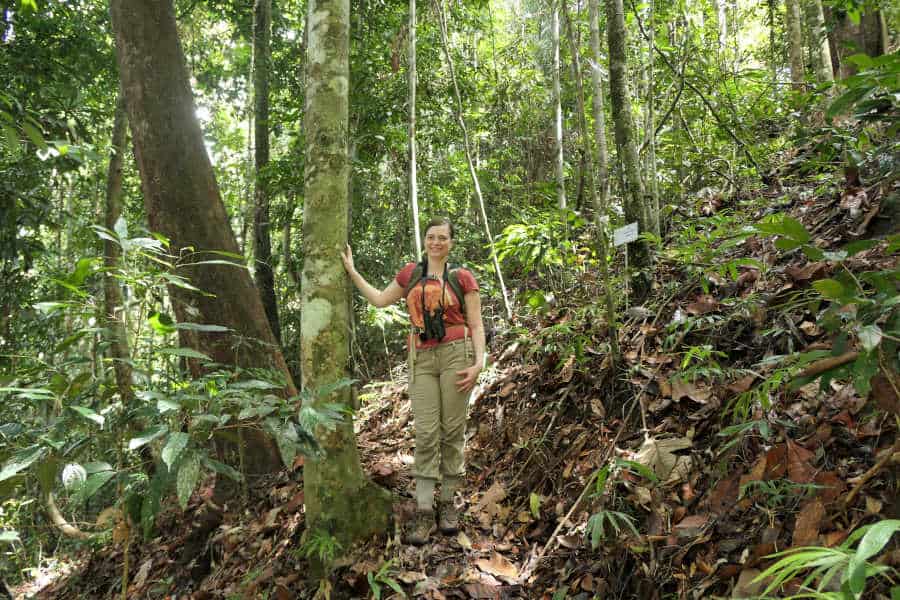
Also try exploring locally by car or other forms of transportation if you have access to them. With the pandemic, a lot of people have been taking vacations within driving distance of their homes. You might not realize how many cool places are around you! This past weekend, I visited the Biltmore. I’ve never been there, yet I’ve lived in NC for almost 7 years now.
You can also plan a staycation. If you are taking a vacation because you are feeling stressed and need a break, do you really need to go anywhere? Have you ever come back from your vacation and thought – I need a vacation from my vacation? Then staying home could be a better option for you.
Think of all the stress you can avoid just by staying home – no planning, packing, plane delays, crowded airports, or jet lag. Simply take some time off and get massages, sleep in, and lounge around. Sounds good to me!
7. Purchase Green Energy
If this is an option for you, see if you can get energy from green sources (wind, sun solar). This is something that I am definitely looking into for 2020. Here’s a great resource guiding you how to get started in the US.
8. Make Your Next Car Electric (Hybrid is Still Better Than Nothing)
Again, this is going to be a hard one for most people because they cannot just easily buy a new car. If you are able to though, consider making your next car electric as this does make a big impact.
Here’s a buying guide to electric and hybrid cars.
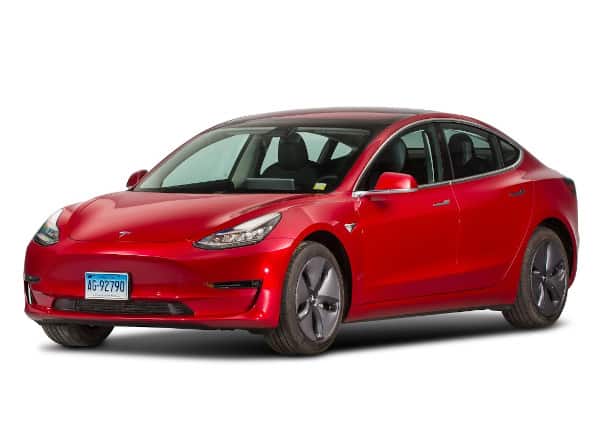
9. Eat Mostly Plants
This one you can definitely do! And it has a BIG impact so you can feel good about it. Going vegan is best because both livestock and dairy have a greater impact on climate change, but vegetarian is still really good.
Most people think of cows as affecting climate change through their methane burps, but it’s also about clearing the land for cattle. In many areas of the world (like South America), forests are slashed and burned to make pastures for cattle. Forests absorb carbon, so by clearing land, you lose a natural defense of climate change and release all of the carbon from the trees cut.
Again, don’t let perfection be the enemy of progress. Here are some simple steps you can take to shift your diet in a climate emergency:
- Try one meatless meal a day
- Do one day of the week meatless
- Gradually go vegetarian or vegan, it won’t be so shocking for you. You’ll get used to it and it will more likely stick.
- If you do eat meat, get it pasture-raised from a local farmer (so you know it’s not contributing to deforestation in tropical areas)
- Get GOOD cookbooks. So important! The reason why a lot of people think veggie meals suck is because they aren’t using good recipes. Here are some of my favorites:


One study found that people were more willing to eat less meat once they learned about its effectiveness in mitigating climate change. I’m telling you here, so now you know (and make sure to tell your friends and family like in recommendation #3: Change the Culture so they know too).
For more information on the impact of diet and tips for becoming more meatless, check out episode #4 of the Fancy Scientist podcast:
Powered by RedCircle
This concludes the section on the biggest things that you can personally do (in green in the figure below). Now let’s get to some additional things you can do to still help, but not as much as these big ones.
Actions That Have a Smaller Impact for a Climate Emergency (But are Still Important)
These ones are much harder to rank, so this section is not necessarily in order.
10. Reduce Heating and Cooling at Home
I’ve been doing this one a lot! Keep your home warmer in the summer and cooler in the winter so you don’t need to use as much energy. If you decrease your heating by 1°C (~2 for us Fahrenheit folks), you can reduce your energy use by 10%. This also saves you money!
Do you get cold in the winter? (Like me)
- Layer up! Wear long-sleeved shirts with sweatshirts or fleeces to stay warm. Always keep a blanket nearby – I work at my desk wrapped up in a blanket.
- Wear warm socks. This is a big one in helping me stay warm during the winter.
Get hot in the summer?
- Take it all off (LOL). You don’t have to go naked, but keep yourself cool by wearing shorts and tank tops.
- Be okay with a little sweat. I personally love the feeling of being warm in the summertime. This one is especially nice after a full day at the office where it is usually super cold because everything is supercooled nowadays.
11. Reduce Food Waste
Food waste is a big contributor to climate change (around 8%), however, a lot of the waste in this statistic does not involve us. Rather it involves the process of getting food to our plates, in which case roughly a third of it is lost along the way.
Despite this, reducing your own food waste can still have an impact. Check out this segment from Full Frontal with Samantha Bee:
Americans waste up a third of the food that we buy.
Make sure you eat your leftovers (I don’t get why some people don’t like them. I think leftovers are frequently better!) and keep an eye on things that spoil fast (e.g. produce). A juicer or a salad is a really great way to through random produce together that doesn’t get used up.
Also think about how much you eat out and get takeout. Food from restaurants comes with a greater carbon footprint and there is often a lot of food waste in restaurants. Not to mention if it is takeout, you probably have plastic containers, which are also bad for the environment in other ways.
12. Switch to LED Lightbulbs
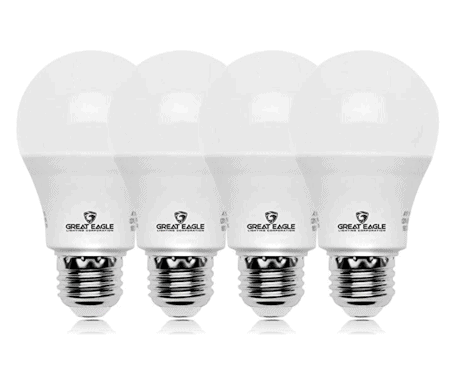
LED lights makes lighting incredibly efficient. Project Drawdown says “If used 5 hours a night, one bulb should last 27 years, making it the least expensive form of illumination on the planet.” (Wow!)
13. Buy Fewer New Things
Buying anything new increases carbon emissions through production. Therefore, just buying less overall while help out a lot in a climate change emergency if everyone buys less.
As a fancy scientist, I LOVE shopping and fashion, so this one has been harder for me. In general though, I have been buying less. But I’ve found some great solutions for when you do have to buy. For fashion, shop local consignment (I love Dress Raleigh) or thrift shops. You can also purchase secondhand online through the Real Real and ThredUp. This year, I am excited to try Rent the Runway.
I hate buying new furniture just because it’s SO expensive! I usually get my stuff off of Craig’s List or OfferUp. People have also told me they’ve done well with Facebook Marketplace.
14. Conserve Energy
This is another pretty easy and obvious one. Here are some ways to do it:
- Turn off lights and appliances when you aren’t using them (off, not standby). Unplug them completely if you can because of vampire electronics. You save money too! Up to 15% off your bill.
- Hang dry clothes. I always do this for my good clothes because it keeps them in better shape.
- Use cold water and run shorter cycles when washing clothes. This also makes your clothes last longer!
- Run dishwashers and laundry machines when they are full (not just halfway).
- Do electronic billing (cancel paper bills).
- Bring reusable bags when shopping so new ones do not need to be made.
15. Buy Local Food and Products
Local products have less of a carbon footprint because they don’t have to travel that far. I do almost all of my produce shopping through the farmer’s markets and a subscription box. You’ll also be supporting your local community.
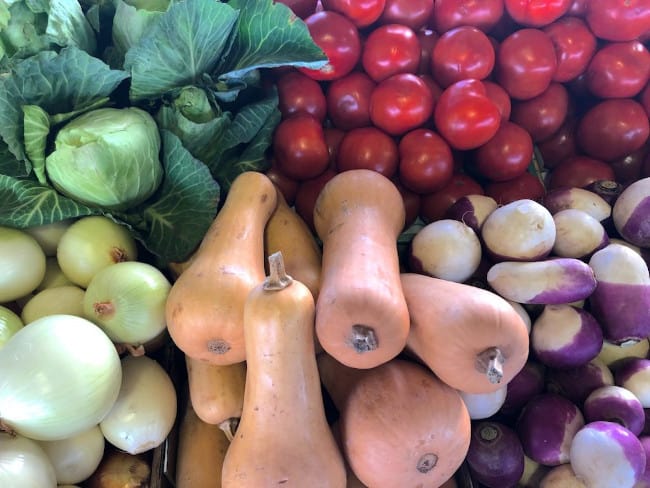
16. Compost
In the kitchen, food makes up about a third of our waste. When food goes to the landfill, it actually doesn’t break down and it releases methane. Composting on the other hand turns old food back into soil.
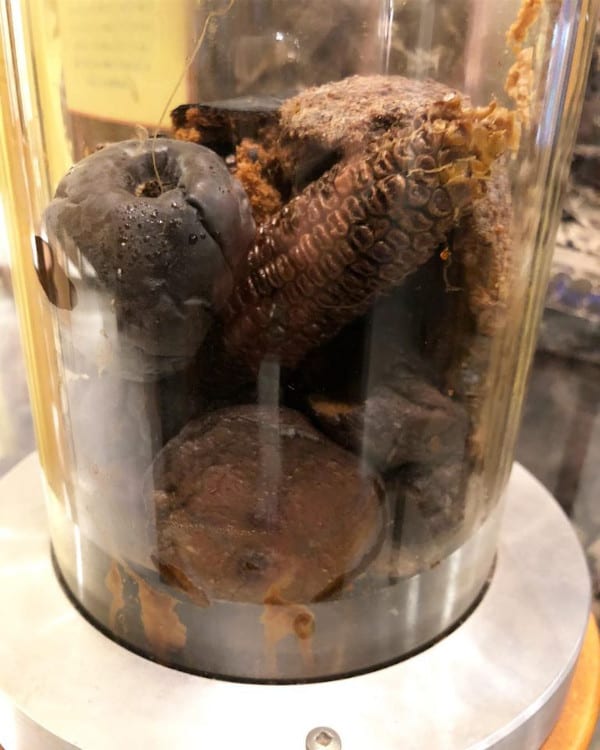
If you are lazy (like me) or live in an apartment, you can still compost in most areas with composting services. I use CompostNow.
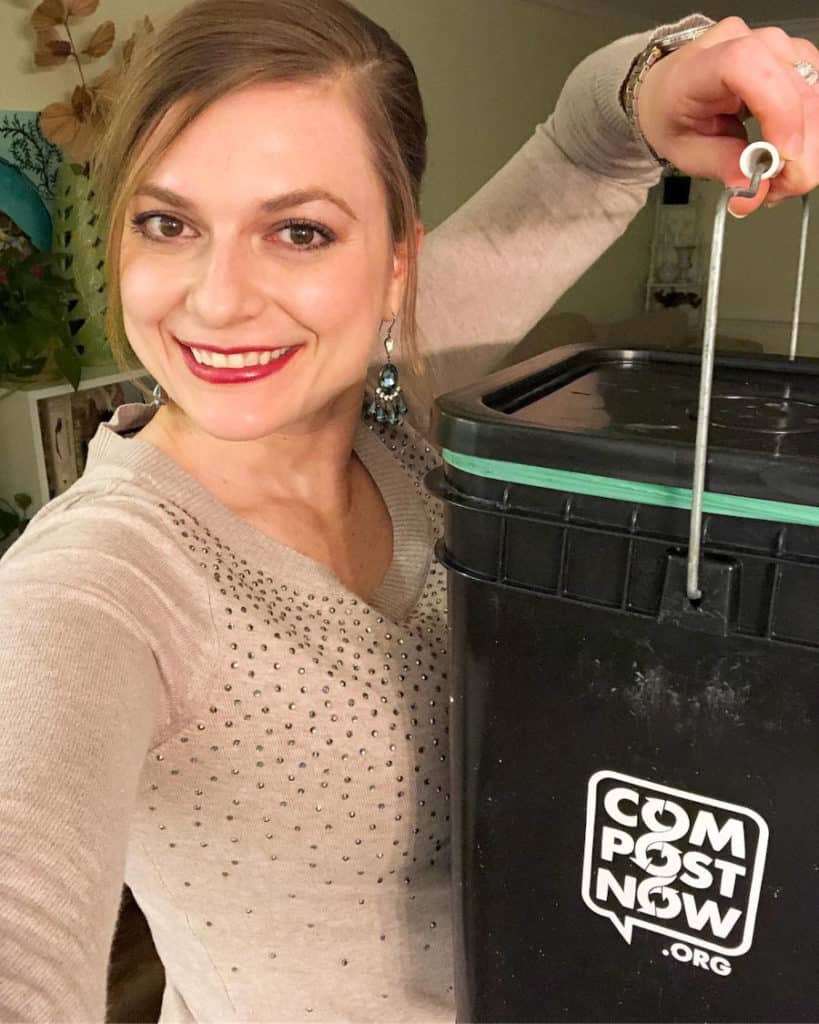
17. Recycle
Recycle as much as you can! Unfortunately this varies according to your state and your city, but look up your town’s rules and make sure you follow them. We are also at a crisis with recycling as a lot of plastic is not getting recycled, so make sure to still reduce the things you buy in the first place.
I am going to do more research on this one and look for places that you can send your items in to get recycled if you don’t have recycling in your area.
18. Donate to Climate Change Efforts
As mentioned before, forests are carbon sinks. This CNN quiz reports that protecting and restoring tropical forests is equivalent to taking 429 million cars off the road, while preserving coastal wetlands is worth 22.4 million cars off the road. Donating money to organizations that protect forests can greatly helps us in this climate emergency.
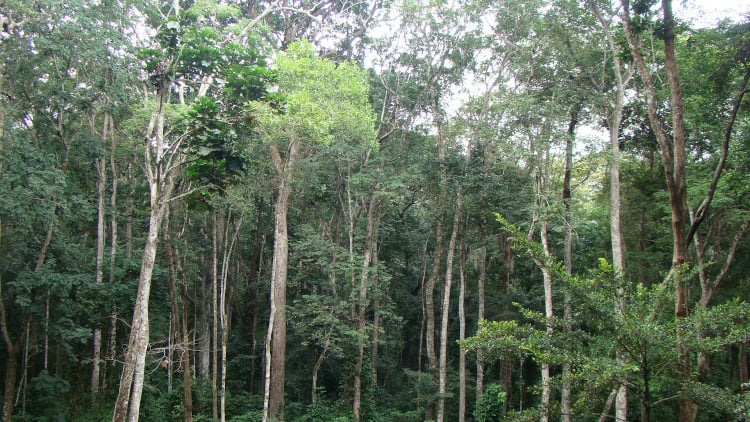
19. Install Solar Panels
I tried to do this with our home by trying to get solar panels installed on our roof, but unfortunately we were rejected because our home is too shady. In the United States, you can get started with solar here.
20. Buy from Companies that Do Their Part
Corporations have a huge carbon footprint (and in fact are responsible for most of the problem as mentioned before). Therefore, I try to purchase from companies that work to reduce their impact. Lots of companies that are the worst are in the oil and gas industry, but even little ones can make a difference.
I now try to get my products from B Corporations, which balance profits with people and the environment.
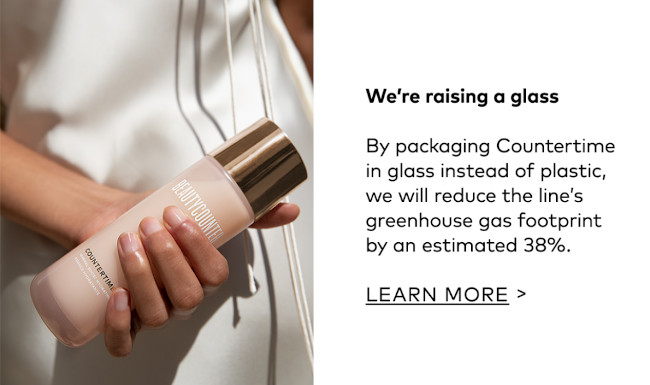
21. Choose the Slowest Shipping Option
I’m an affiliate of Amazon, but I am not a fan of their one-day shipping option. While there is definitely corporate responsibility, it’s also in response to consumer demand. And if we don’t use it, they won’t make it an option. This of course will take a lot of action on our behalf.
Amazon is also shifting towards net zero carbon delivery by 2030. Until then, get the slowest option.
This was a beast of a post and there’s a lot more I can write about and I am sure I will add to it over time. What other ways can we solve this climate emergency? Post your ideas in the comments below.
What is your climate footprint? You can take this WWF quiz to find out.
Love this post? Share it with friends!


